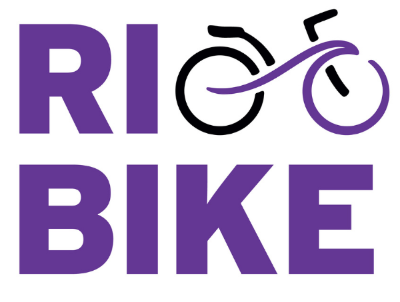If you’ve spent any significant time riding a bike around with cars, you’ve certainly encountered what I call a “Whoa… that was close” moment; the vehicle that sneaks up on you and passes you close enough to really catch your attention. If I were to wager a guess, I’d say I experience this once every three months.
It so happens that I had one of these very experiences recently as I was riding across the Point Street bridge, heading towards Wickenden Street. For those unfamiliar with the area, the bridge has two lanes in the direction I was traveling, with no usable shoulder. I use a vehicular approach to biking in the city, which places me far enough out into the lane, that an automobile passing me would need to move over to the other lane to safely pass. I was fully within my legal rights to be riding as described. As I was crossing, a bright yellow truck with www.providencedowntown.com highlighted on the tailgate, passed me and someone yelled “get on the sidewalk”. There was no contact and at no time did a feel this was an intentional act to scare me, but it certainly was one of those “whoa… that was close” moments.
Since it was one of these fairly rare interactions where I took particular note and the vehicle was so clearly marked, I decided to follow up with the organization, to let them know what I had encountered. If I were in charge of a fleet of vehicles and something like this occurred, I’d want to know about it. I hunted around for contact information associated with Downtown Providence, but all indications pointed to The Providence Foundation. I sent a brief email to Daniel Baudouin, Executive Director of the Providence Foundation, detailing my recollection of the encounter. Within half an hour, I had received an email from Dan stating he would follow up with this. It turns out this particular truck was being operated by Block by Block, under a contract with the Downtown Improvement District; which The Providence Foundation helped to create. In less than two hours after my initial email, Dan had an answer for me and we had spoken on the phone.
There were some discrepancies between my account and the driver’s account of the event, but everyone agreed that there had been an encounter. I believe the observed discrepancies, while I wouldn’t go so far as to say are right, are understandable. The same encounter, as viewed from inside a metal cage and from the seat of a bicycle are very different. It’s easy for motorists to forget just how vulnerable cyclists are and how a passing distance that feels plenty safe for a motorist may not seem so safe to a cyclists.
In the end, Dan assured me that the Providence Foundation would try harder with their driver training; reminding their drivers that they will be sharing the road with vulnerable users and specifically make note of bicycle rights to the road. Kudos to Dan Baudouin and The Providence Foundation for taking this matter seriously. Because of the speed an sincerity of the response, I truly believe they will honor their word and work with the drivers.
I think there are important lessons to be learned by this encounter:
- It’s a reminder for cyclists to stay visible and ride predictably. Had I not been doing either of these, the encounter could have been far worse.
- This also serves as a reminder to stay calm. The truck was stopped by the light at the end of the bridge. Had I had a mind to, I could have ridden up to the drivers window, started pounding on it, and started a verbal confrontation. This would have had little lasting affect, other than to aggravate a driver and potentially make them into another cyclist hating motorist.
- If you can identify the owner or company associated with the vehicle, then follow up. Do so in a dignified way, with the goal of discussing and understanding what took place and how to prevent a recurrence. Notice how even a simple encounter like this involved three different corporate/non-profit entities. How you approach such a conflict could leave a lasting impression much larger than you could ever imagine.
I truly believe one of the quickest ways to effectively sharing our limited roadways with motorists and cyclists, is through direct and frank discussions. Both sides need to reach out, explain, and understand the perspective of the other road users.
